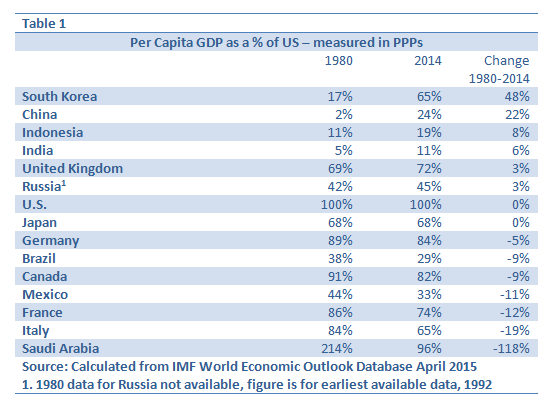'Made in China 2025' key to China's development
- By John Ross
 0 Comment(s)
0 Comment(s) Print
Print E-mail China.org.cn, July 19, 2015
E-mail China.org.cn, July 19, 2015
"Made in China 2025," the program launched by China's government to establish the country as a global high-tech manufacturing economy, is the strategic key to China's development. An analysis of why this is the case also highlights the key overall challenges facing China's economy.
The specific aims of "Made in China 2025" are to emphasize innovation-driven, high-quality manufacturing and to raise the domestically-produced proportion of key manufacturing components to 70 percent by 2025. The program highlights 10 key manufacturing sectors for radical upgrading, including information technology, mechanized tools and robotics, aerospace, railways, power equipment, biotechnology and high-end medical products. But the program's most crucial aim of all is to create an advanced manufacturing industry to support China's overall development.
The most fundamental development issue facing China is simple. China is now either the world's second-largest economy as measured at current dollar exchange rates, or the world's largest economy as measured by purchasing power parity, or PPP. But China's per capita GDP still lags far behind that of developed economies, particularly the United States, the world's most advanced economy. As shown in Table 1, China's per capita GDP in 2014 was only 24 percent that of the U.S. In this table, PPP measures are used because market exchange rates tend to move toward PPP ones over time, so the latter are therefore more suitable for measuring long-term trends.
As living standards are approximately proportional to per capita GDP, and as the latter also reflects productivity, China's key task in ensuring its prosperity is to reduce the gap in per capita GDP between itself and the world's most advanced economies. Clearly, the scale of the current gap means this cannot be achieved in a short period. Therefore, the key is to adopt a development strategy that can narrow this gap over a few decades.
When analyzing international examples to determine which development strategies have been successful in achieving China's key goal, comparisons to very small states - which often have highly specialized economies - are not directly relevant. Table 1 therefore only shows the per capita GDP of the world's 15 largest economies. The data shows which of these countries have successfully narrowed the gap in per capita GDP with the U.S. and which have fallen further behind.

The first striking feature is that all major advanced economies, with the marginal exception of the United Kingdom, have fallen further behind the U.S. since 1980. A more detailed table would show that since 2008, the U.K. has also fallen behind the U.S. This pattern clearly shows that the strategies being used by the advanced economies have not succeeded in narrowing the gap with the U.S. and have led these countries to fall further behind.





